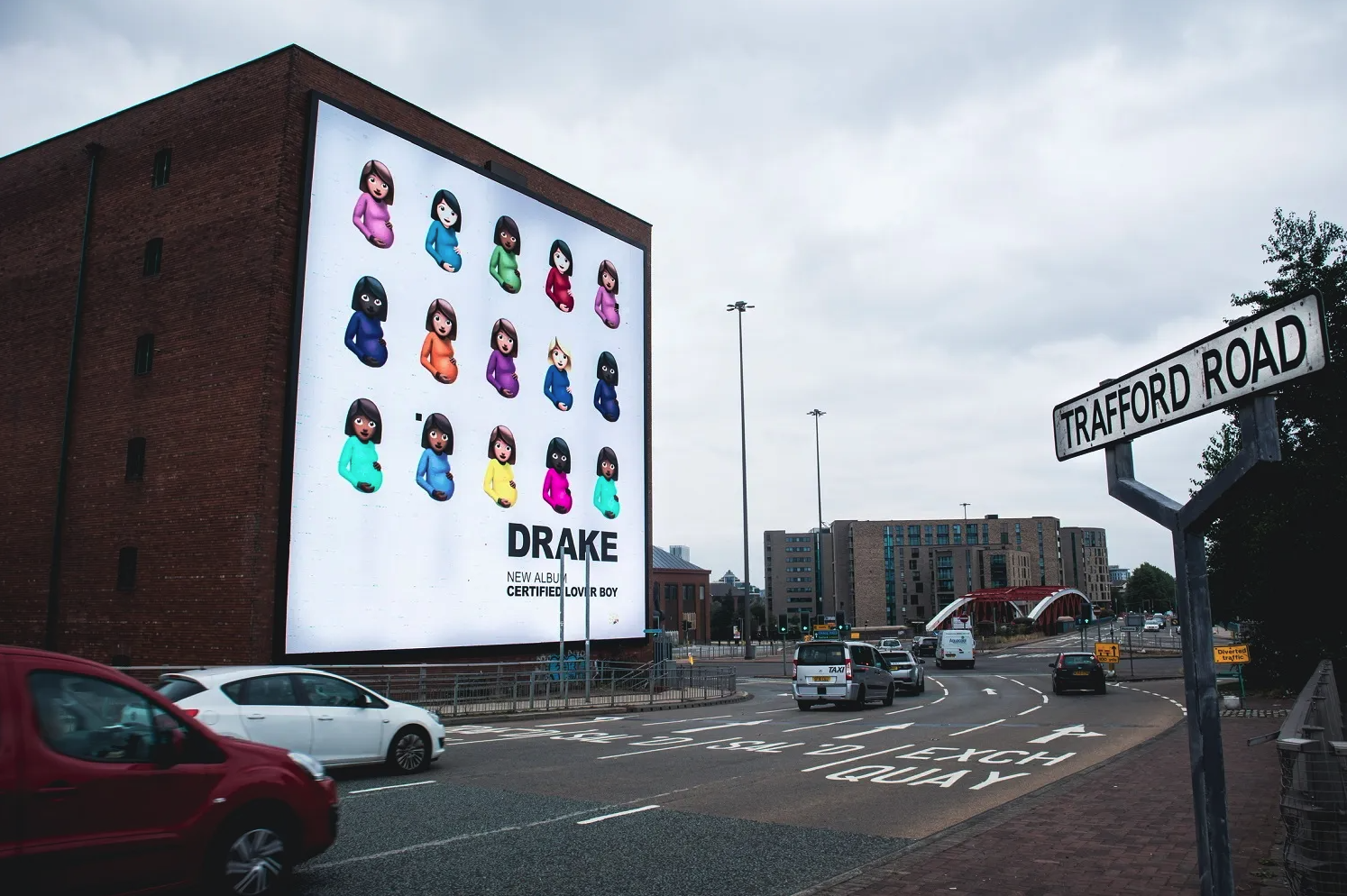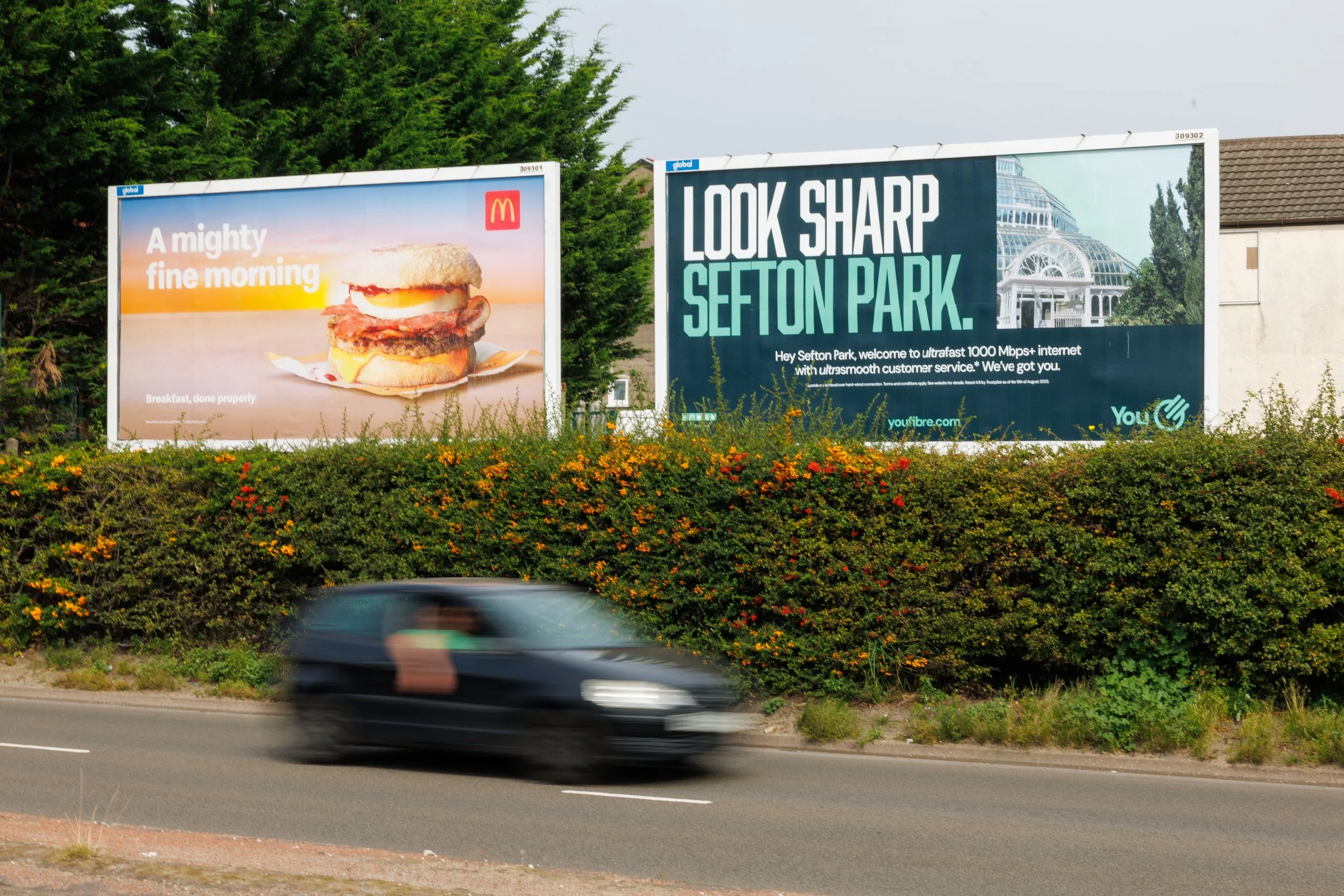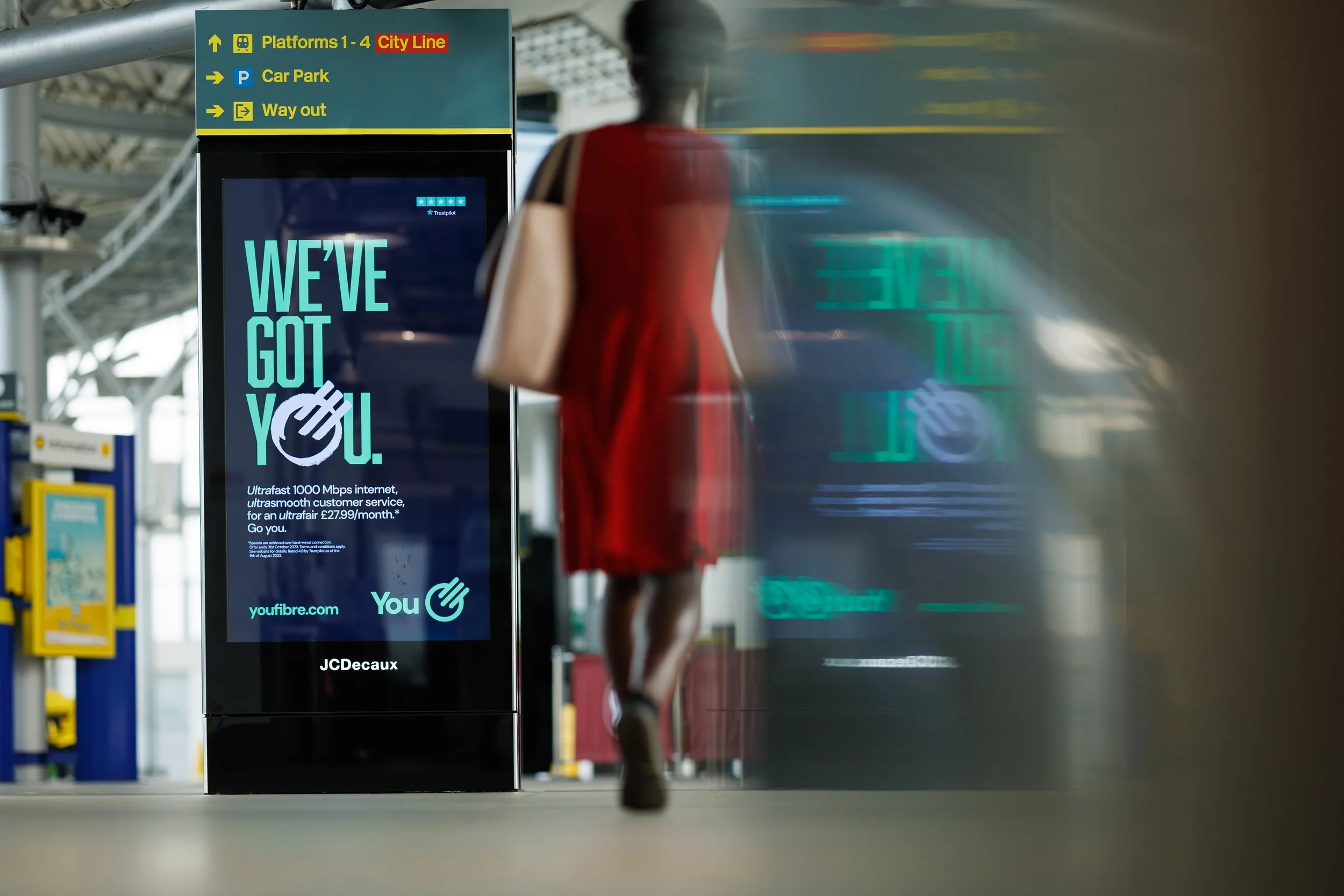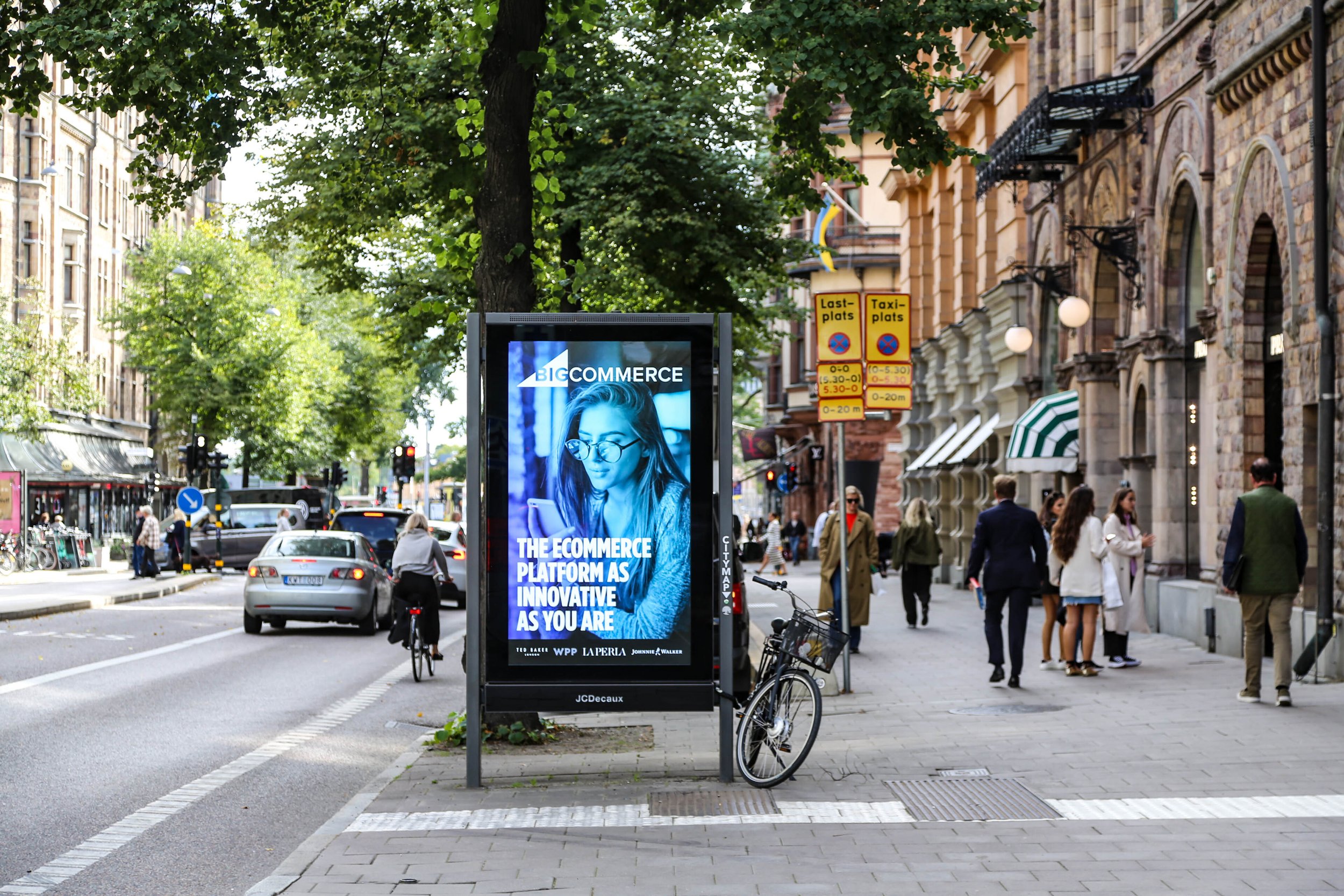What are the advantages and disadvantages of billboard advertising?
The dominating and towering nature of billboards has helped to spread advertising messages far and wide since the 1800s.
As a traditional form of marketing, billboards have established their significance as a prominent advertising medium, continuing to evolve to maintain relevance and provide value in the dynamic marketing landscape.
From engaging and memorable designs to repetitive exposure on your daily journey, billboard advertising has many benefits. However, their susceptibility to the weather and inability to target niche audiences indicate that the advertising medium is not devoid of challenges.
In this article, we take a look at both the advantages and disadvantages of billboard advertising and examine their effectiveness in today’s marketing landscape.
Billboard Advantages Explained
1) Billboards Reach a wide variety of consumers.
The effectiveness of a billboard relies heavily on location. Billboards are placed in high-traffic areas such as roadsides, transport hubs and commercial districts to ensure maximum visibility and exposure to those going about their day.
According to research (1), 97% of UK adults see an out-of-home (OOH) advertisement in any given week meaning that there is an opportunity for advertisers to reach just about any potential customer in the UK in any given week with billboard advertising.
Static billboards don’t typically share space with other advertisers and therefore have consistent uninterrupted messaging, maximising exposure and optimising reach.
Similarly, digital billboards offer a more dynamic approach to advertising that helps to capture the attention of those passing by. So although they share space with other advertisers, their strategic placement and dynamic content help to attract and reach a wide variety of consumers.
The reach of a billboard can be dramatically increased when leveraging social media. Clever and creative billboard campaigns have the opportunity to go viral online, increasing reach and brand awareness.
A reactive billboard campaign by Checkatrade recently went viral on Twitter for taking a cheeky jab at Manchester United's form and the state of their stadium.
The billboard is located just outside of Old Trafford Stadium and is Europe’s second largest. This means the advertising message was not only optimised for real-world impressions but is also likely to generate buzz online with millions of online football fans.
2nd Largest Digital Billboard in Europe.
Coverage of the billboard in the press and discussions on Twitter helped to generate over 15 million impressions in 24 hours.
2) Billboards are Affordable and effective
The size of a billboard has a significant role in determining cost. The larger the billboard the more costly it becomes due to its increased visibility and reach but there are many affordable options for businesses with limited budgets.
Billboard advertising is affordable for almost every advertiser with the average cost starting from around £200 per week for a standard 48-sheet hoarding.
Billboards are effective for a number of reasons, including the ability to reach a wide variety of people as well as create an unforgettable presence both online and in the real world. They can be highly impactful on their own or alongside other advertising formats for increased brand awareness.
Their effectiveness does depend on a few factors such as location and design, so it’s important to consider this when strategising your billboard campaign.
3) They offer Repetitive exposure
Billboards have a strong impact on recall and recognition with a study conducted by Arbitron (2) finding that 73% (of those surveyed) recalled seeing at least one ad on their commute during the study survey period.
This can be attributed to repetitive exposure to the advertisement, which consistently reinforces the message, making it more likely that individuals will remember the brand when making a purchasing decision.
3) They can Increase sales
Billboards are an excellent tool for reaching customers new and old. Their strategic location, ability to reach the masses and consistent presence means that your customers are guaranteed to come into contact with your advert at least once during the advertising period. Heightened exposure to the advertisement increases the likelihood of your customers considering your brand when making purchasing decisions.
Furthermore, eye-catching and persuasive billboards can influence consumer habits, including impulse purchasing. Let’s say a customer is heading to the bus stop after finishing a 9-5 shift but comes across a dynamic DOOH advert for a delicious and juicy burger. This strategic ad placement paired with one hungry customer is all it takes to encourage an impulse purchase.
4) They’re ‘Always on’
Whether it’s a static billboard or digital billboard, they are ‘always on’. Their consistent presence offers 24/7 exposure for minimal effort whereas other forms of advertising such as Google search ads typically require attention and constant tweaking.
Additionally, consumers don’t have the option to turn it off or scroll away if they don’t like it which means more impressions on your advertisement. In fact, a survey from 2022 (2) found that 32% indicated liking billboard advertising whereas a different survey (4) found that 74% of people are tired of social media ads.
Billboard Advertising - YouFibre Campaign - Paper 48 Sheet.
The Disadvantages of Billboard Ads
1) Vandalism
Due to the static nature of some billboards, they can become targets of vandalism. Materials that are resistant to vandalism such as anti-graffiti laminates make it easy to remove unwanted markings and surveillance of the advertisement can help mitigate the risk of vandalism.
2) Weather
The weather can pose various risks to billboards due to their outdoor placement. Some of the common weather risks include: lightening, wind damage, rain and moisture and prolonged sun exposure. To mitigate these risks, advertisers can use weather-resistant materials and conduct regular checks on the advertisement.
3) Limited Message Time
Billboards offer limited time for viewers to absorb the advertisement message as they’re often passing by quickly. It’s therefore important to ensure your message can be delivered quickly and effectively.
Furthermore, some billboards share space with other advertisers with digital billboards rotating between 6-8 branded messages over the course of 60 seconds. These ads need to be optimised to ensure maximum impact in a short amount of time.
4) Limited Audience Targeting
Billboards are excellent at targeting a wide variety of people but this can be seen as a disadvantage if you’re looking to target a specific audience. There is a possibility that your billboard advert may reach people that aren’t interested in your brand which can lead to higher advertising costs and reduced return on investment. A more targeted approach often leads to better engagement and conversion rates.
It’s therefore essential that research is conducted beforehand and during activation to determine the effectiveness of a billboard campaign.
5) Inability to Update Content Quickly
Once installed, it can be a costly and timely process to amend a static billboard. In a dynamic market, consumer preferences and trends can change rapidly and the inability to update content quickly means that advertisers may miss out on opportunities that align with current events and market trends.
On the other hand, digital billboards offer the ability to remotely adapt campaigns offering increased flexibility. This means that advertisers are able to stay relevant as well as promptly update content to address concerns and convey important information in real-time. Taking into consideration the type of billboard best suited for your campaign can help you make informed decisions that align with your advertising objectives.
What are the different Types of billboards?
There are various types of billboards that serve different uses and therefore have their own set of unique advantages and disadvantages. Billboards can be grouped into two distinct categories:
Static: These traditional billboards don’t move. The message doesn’t change and they typically don’t share advertising space with other businesses. The message is printed or features an image that remains consistent throughout the advertising period.
Digital: These more modern billboards use digital display technology to showcase advertising messages on electronic/LED boards. The content is dynamic and typically rotates between multiple advertisements that run for a different amount of time.
Digital Billboard Advertising - Digital 6 Sheets.
Conclusion
In conclusion, billboard advertising presents a dynamic interplay between its advantages and disadvantages. Billboards, whether static or digital, have the ability to reach vast amounts of people and are an effective advertising medium. It’s no wonder they have become a skyline staple.
Whilst cost-effective and impactful, billboards face challenges, which is why it’s essential to strategically plan campaigns to maximise the advantages and minimise the challenges. Looking for a billboard advertising agency? Get in touch today to speak to our specialised team and explore bespoke solutions tailored to optimising your billboard advertising campaign.
FAQs
What are the advantages of billboard advertising?
Ability to reach a wide variety of consumers
Provides repetitive and frequent exposure
Sets your brand apart from the competition
Affordable and effective
Increases sales
Always on
What are the disadvantages of billboard advertising?
Limited audience targeting
Susceptible to weather and vandalism
Limited time for viewers to absorb messaging
Some billboards are unable to be updated quickly
Is billboard advertising effective?
Billboards are one of the most effective marketing tools with the Out of Home Advertising Association of America (OAAA) stating that billboards have an astounding 497% return on investment. Research also found that almost half (49%) of adult consumers are noticing OOH ads more than one year ago. This indicates that billboards are effective at capturing attention as well as being a good investment for advertisers.
Billboard advertising is most effective for reaching a wide variety of people and increasing brand awareness on a local and national scale. When used alongside a digital marketing strategy, they can be a powerful component of your overall marketing strategy.
References
1) https://the-media-leader.com/denise-turner-ooh-reach-within-2-5-of-pre-pandemic-levels/
2) https://www.researchgate.net/publication/260601854_The_Effects_of_3D_Billboards_on_Consumers%27_Attention_and_Awareness
3) https://www.statista.com/statistics/1330305/attitude-billboard-ads-us/
4) https://uk.surveymonkey.com/curiosity/74-of-people-are-tired-of-social-media-ads-but-theyre-effective/#:~:text=Consumers%20dislike%20the%20ads%E2%80%94for%20many%20reasons&text=Nearly%203%20out%20of%20every,to%20their%20wants%20and%20needs
If you want to learn more about Billboard Advertising, reach out to us today.














